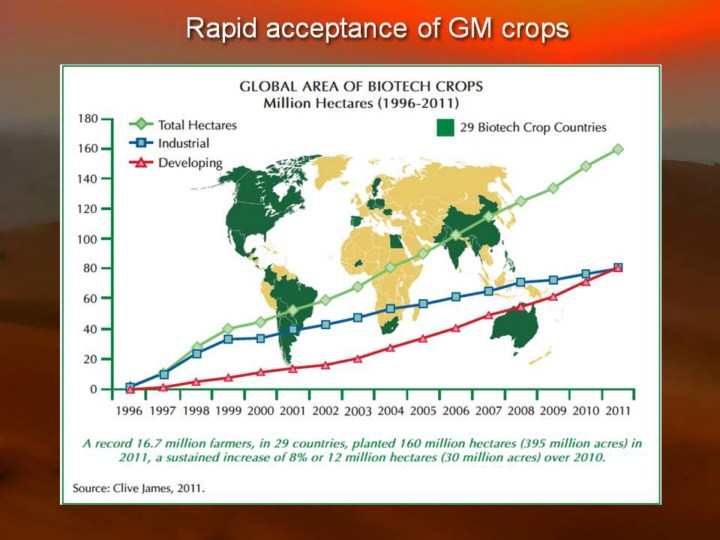| front |1 |2 |3 |4 |5 |6 |7 |8 |9 |10 |11 |12 |13 |14 |15 |16 |17 |18 |19 |20 |21 |22 |23 |24 |25 |26 |27 |28 |29 |30 |31 |32 |33 |34 |35 |36 |37 |38 |39 |40 |41 |42 |43 |44 |45 |46 |47 |48 |49 |50 |51 |52 |53 |review |
 |
Fortunately, there’s good news, as well. Despite continuing controversies and anti-GM activism, GM crop acreage has increased rapidly world-wide, driven primarily by cotton, corn, canola and soybeans. In 2011, GM crops were grown in 29 countries on 160 million hectares. More importantly, 90% of the 16.7 million farmers growing biotech crops are small-holder, resource poor farmers. Half of the biotech crop acreage today is in developing countries. The simple reasons that farmers migrate to GM crops is that their yields increase 5-25% and their costs decrease, in some cases by as much as 50%. Urban myths about the dire health and environmental effects multiply faster than the crops. But not one has stood up to scientific scrutiny. All of the effects so far, both expected and unexpected, have been benign. Less pesticide used, less herbicide, fewer cases of pesticide poisoning, and – surprisingly – much less contamination of corn by poisonous fungal toxins made by the fungi that follow the insects as they bore into the corn.
|